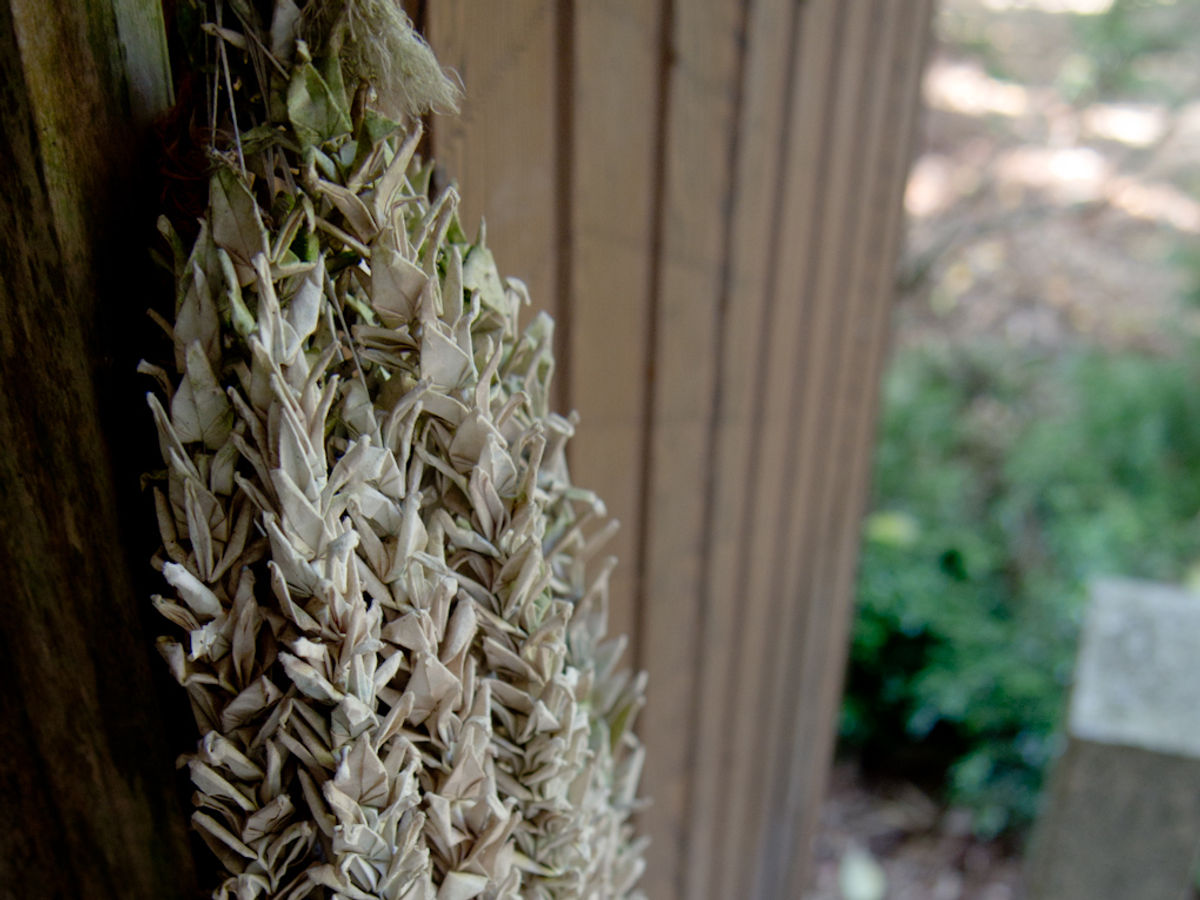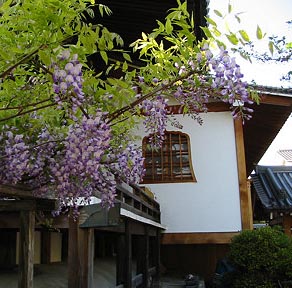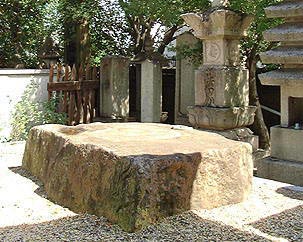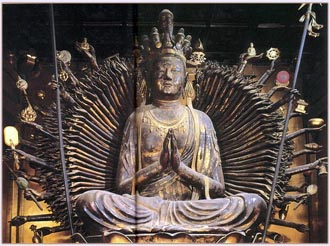
Fujiidera (葛井寺) – Wisteria Well Temple
Fujiidera, formally known as Shiunzan Fujiidera, is a Shingon Omoro sect temple in Osaka Prefecture. Founded in the early 7th century as the clan temple of the immigrant Kudara no Fujii family from Baekje, it has long been a center of culture, politics, and pilgrimage. Its name, meaning “Wisteria Well Temple,” reflects the contributions of two benefactors named Fujii who helped shape its history. Located in the heart of a bustling city, it still preserves a quiet, sacred atmosphere within its gates.

Things to See at Fujiidera
Shopping Arcade Approach
The temple approach passes through a covered shopping arcade, reminiscent of the monzen machi (“temple front towns”) that historically catered to pilgrims with lodging, food, and entertainment.
Temple Gates
Four gates from the Momoyama period (1573–1615) open to the cardinal directions and are designated National Important Cultural Properties. The Nandaimon (Great Southern Gate) serves as the main entrance.
Hondō
The main hall, rebuilt in 1753 under Abbot Yūsen, houses the temple’s principal image. Though the site has hosted a temple for over 1,400 years, it has endured repeated destruction due to political conflict and natural disaster.
Foundation Stone
A remnant of the original family temple built by the Fujii clan about 1,400 years ago.

Market Day
On the 18th of each month, the Senjū Kannon is revealed to the public, turning the grounds into a lively market with local produce, preserved foods, and goods.
Sonshinryū Kannon
A bronze statue of “Kannon Riding on the Precious Heart Dragon,” depicting the deity in flowing robes atop a twisting dragon, a sacred messenger in Buddhist tradition.
Mini-Pilgrimage
Small shrines in the wisteria garden enshrine images of the 33 pilgrimage temples, offering the same merit as visiting the full route.
Shusse Jizō
A figure to whom visitors pray for success in business, projects, or studies.
Sankō Maki
A sacred pine with three-pronged leaves, symbolizing the Three Jewels of Buddhism and the Three Mysteries of esoteric practice. Tradition holds that Kōbō Daishi brought its seeds from China in 805.
Legends of Fujiidera
Founding and Imperial Patronage
The temple was founded by Emperor Shōmu (r. 724–729) as a chokuganji, built to pray for national peace. Gyōki, a renowned priest, presided over its opening. Its location among ancient kofun burial mounds reinforced its sacred status. Notable visitors and patrons included Sugawara no Michizane, Emperor Godaigo, and Emperor Horikawa.
Fujii Yasumoto
In 1096, Fujii Yasumoto, a local nobleman, restored the temple’s main hall, earning the temple its current name in gratitude.
Ariwara no Narihira’s Disillusionment
The famous poet and courtier Ariwara no Narihira resided here to study calligraphy. Legend says he once rode to visit a noblewoman he admired, imagining her in elegant beauty. Peeking into her kitchen, he was shocked to see her licking the rice paddle after each serving. Disenchanted, he abandoned his romantic pursuit, and the tale became a cautionary local legend.
Principal Image of Worship
The principal image is the Senjū Kannon, known as Fujii Kannon, a National Treasure and one of the finest examples of kanshitsu (dry lacquer) sculpture from the Tempyo era (710–794). Created in 725 by master artisans Keibun’e and Keishukun, it has 1,042 arms and is revealed to the public on the 18th of each month. The image is particularly venerated by women praying for safe childbirth and for protection from misfortune.

Goeika of Fujiidera
Mairu yori
Tanomi wo kakuru
Fujiidera
Hana no utena ni
Murasaki no kumo
Not just visiting
But asking for help
Fujiidera
On the flower trellis
A purple cloud